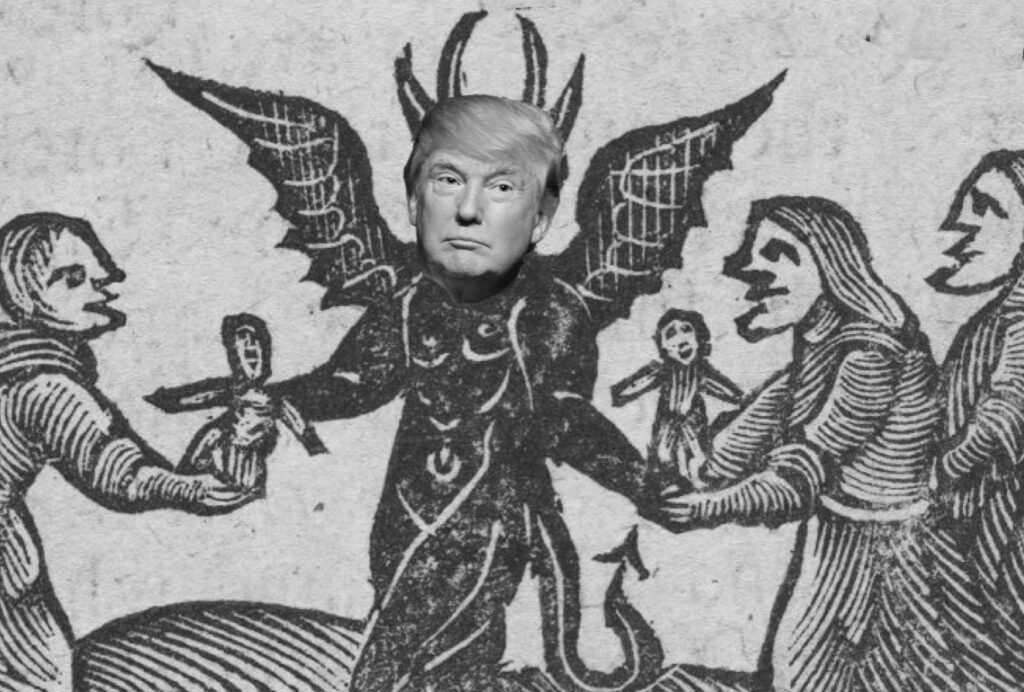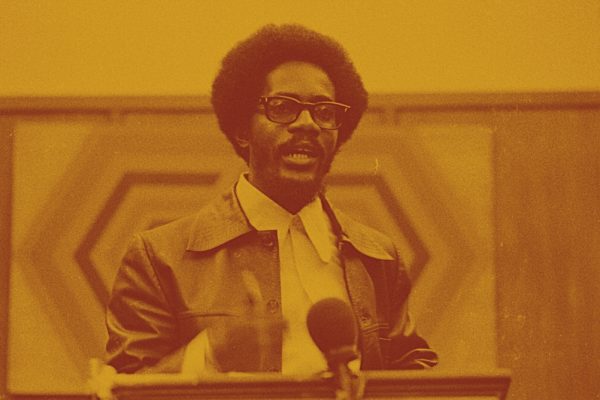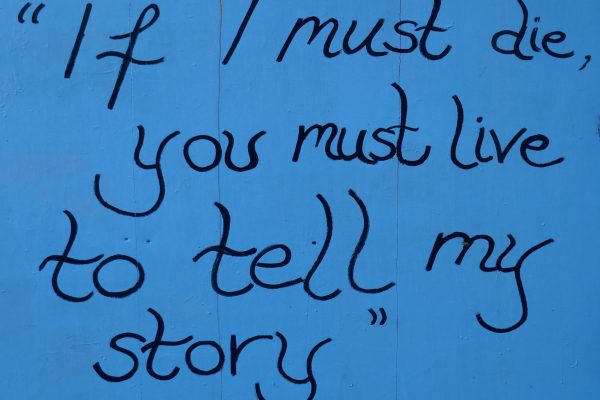Autumn 2018 is shaping up to be the season of the witch.
In the context of the ongoing Mueller investigation and recent concerns about Brett Kavanaugh’s nomination to the Supreme Court, President Donald Trump and his supporters have invoked the idea of a “witch hunt” again and again. In 2018 alone, Trump has tweeted the term 112 times, and Lindsay Graham mocked a Kavanaugh protestor by suggesting that they may as well “dunk [Kavanaugh] in water and see if he floats.” The media has also kept pace: the New York Times, for example, has printed the term “witch hunt” a remarkable 336 times so far in 2018, which more than triples the rate of its use prior to 2016.
One of the defining characteristics of a witch hunt is its dependence on confabulated “evidence.”
The term has so pervaded U.S. political discourse that it is therefore worth remembering where it comes from, which also offers an opportunity to reflect on how its present use may work a political dark magic all its own.
There are witch stories from all over the world, and Europe experienced periodic paroxysms of witch-hunting into the eighteenth century, but the most famous North American witch hunt took place in Salem Village (present-day Danvers, Massachusetts) in 1692–93. There is a rich historiographic literature on the Salem witch trials, viewing these events through various historical, psychological, and economic lenses, but in broad terms, accusations involving a handful of young women mushroomed into a grotesque travesty that claimed the lives of twenty innocent people.
As with other witch hunts, this bitter injustice happened because the court of law elected to credit “spectral evidence.” That is, the court accepted as evidence claims that the defendant harmed the victim in visions and dreams. Cotton Mather played a significant role in the Salem witch trials in no small part because he had previously written about the ability of witches to project a spectral vision of themselves and afflict their victims remotely. After Salem, he continued to espouse this belief, detailing in his The Wonders of the Invisible World (1693) how a witch’s victim can be “assaulted with Instruments of Iron wholly unseen to the standers by.”
In a sense, Mather was more right than he knew when he insisted that to hunt a witch one must embrace the spectral. Indeed, this is one of the defining characteristics of a witch hunt, its dependence on confabulated “evidence.”
Arthur Miller reflected deeply on this when he wrote The Crucible. In his 1996 New Yorker essay “Why I Wrote The Crucible,” he notes that he was drawn to the notion of “spectral evidence” and how it created a “poisoned cloud of paranoid fantasy” in which the strangest accusations “made a kind of lunatic sense to them.”
For Miller, the use of spectral evidence to destroy lives served as a powerful metaphor of the activities of the House Un-American Activities Committee, which, with the encouragement of Sen. Joseph McCarthy, hounded politicians, academics, celebrities, and other public figures while chasing vague rumors of Communist sympathizers. As in Salem, these persecutions moved some to accuse others as evidence of their innocence. Only Ethel Rosenberg was killed by the state in this witch hunt, but many careers and lives were destroyed. Miller’s play has been remarkably popular, a staple of high school reading lists, and, as Miller wrote in 1996, “it is only a slight exaggeration to say, that, especially in Latin America, The Crucible starts getting produced wherever a political coup appears imminent.” It is thanks in large part to the perennial popularity of Miller’s play, and the aptness of its metaphor, that the term “witch hunt” now pervades our political vocabulary.
However, today’s revival of the term is problematic because it gets the metaphor so wrong: though they wish to dismiss it as spectral, Trump and his cronies face real, non-spectral evidence that is stacking up against them. Likewise, Christine Blasey Ford testified that she was assaulted by the real Brett Kavanaugh, not a specter of him.
Trump and his cronies face real, non-spectral evidence that is stacking up against them. Likewise, Christine Blasey Ford testified that she was assaulted by the real Brett Kavanaugh, not a specter of him.
This incorrect use of the term “witch hunt” matters for two reasons.
In her new monograph, Witches, Witch Hunting and Women, Silvia Federici condemns the commercialization of sites of witch hunts in Europe: “Sites of famous trials and persecutions that led to the execution of dozens of women are now parading in shop after shop doll-like representations of witches.” In Salem, the exploitation of this suffering is perhaps still more extreme, especially around Halloween. The trials have become a major part of the town’s culture and economy, unimpeded by the small detail that Danvers, one town over from present-day Salem, was the actual site for most of the witch trials. Trivializing the death of those convicted of witchcraft—mainly women—is a form of violence, and Federici challenges us to consider that “denouncing the commerce made of women’s bodies and their death to boost tourism” is an important step in toppling patriarchal domination. By extension, one could argue that the flagrant misuse of the term “witch hunt” as a political meme also abuses the memory of those who were actually hunted as witches.
But even as Trump’s persistent denunciations of the Mueller investigation as a “witch hunt” trivializes the deaths of accused witches, it also performs the sleight of hand of making the accusations against the president’s camp seem trivial and baseless. In order for Trump’s “witch hunt” claims to be true, the evidence against him would have to have no empirical basis. The future and outcome of the Mueller investigation is impossible to predict, but it is safe to say that Mueller’s team has collected evidence that does not come from dreams and visions. Therefore, when Trump insists that he is the victim of a witch hunt, we would be wise to see this as a prime example of another current meme: gaslighting.






